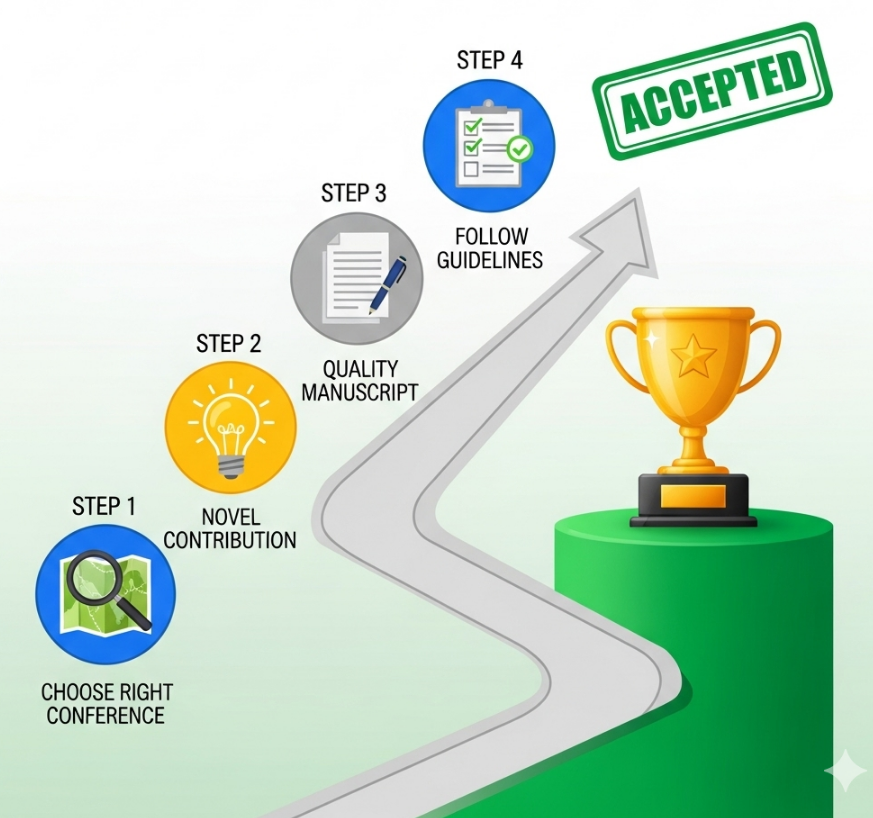

109 views||Release time: Sep 17, 2025
The process of submitting a paper to an academic conference can be both exciting and nerve-wracking. A high acceptance rate is a key indicator of research productivity, but receiving a rejection can be disheartening. The good news is that you can significantly improve your chances of acceptance by adopting a strategic, quality-focused approach.

This guide breaks down the essential strategies—from selecting the right conference to polishing your final submission—that will help your paper stand out to reviewers and secure its place in the conference program.
Phase 1: Strategic Planning and Selection (Before You Write)
Many papers are rejected before the first word is even written simply because they are sent to the wrong venue.
1. Choose the Right Conference
2. Develop a Strong, Novel Contribution Your paper must have a clear "so what?" factor. Before writing, you should be able to articulate your paper’s core contribution in a single, compelling sentence. Ask yourself:
Phase 2: High-Quality Research and Manuscript Preparation
Once you've chosen the right venue, the quality of your paper is paramount.
1. Ensure Robust Methodology and Sound Results This is non-negotiable. Your experiments must be well-designed, your data analysis must be appropriate, and your conclusions must be directly supported by your results. Clearly explain your methodology so that others can replicate your work. Any perceived weakness in your research design is a major red flag for reviewers.
2. Craft a Clear and Logical Narrative A paper is a story. It should have a clear, logical flow that guides the reader from the problem to the solution.
3. Prioritize High-Quality Writing and Presentation
Phase 3: The Submission and Revision Process
1. Strictly Adhere to All Submission Guidelines Read the author guidelines and follow them to the letter. This includes formatting, page limits, reference style, and anonymization rules (for double-blind reviews). Failing to follow these rules is one of the easiest ways to get your paper desk-rejected.
2. Write a Compelling Cover Letter (If Allowed) If the submission system allows for a cover letter or a note to the editor, use it. Briefly explain your work's key contribution and why it is a perfect fit for the conference.
3. Address Reviewer Comments Constructively If you receive a "revise and resubmit" decision, treat it as a victory.
By combining a strategic choice of conference with a meticulously prepared, high-quality manuscript, you can dramatically increase your paper's chances of acceptance and successfully share your research with the world.